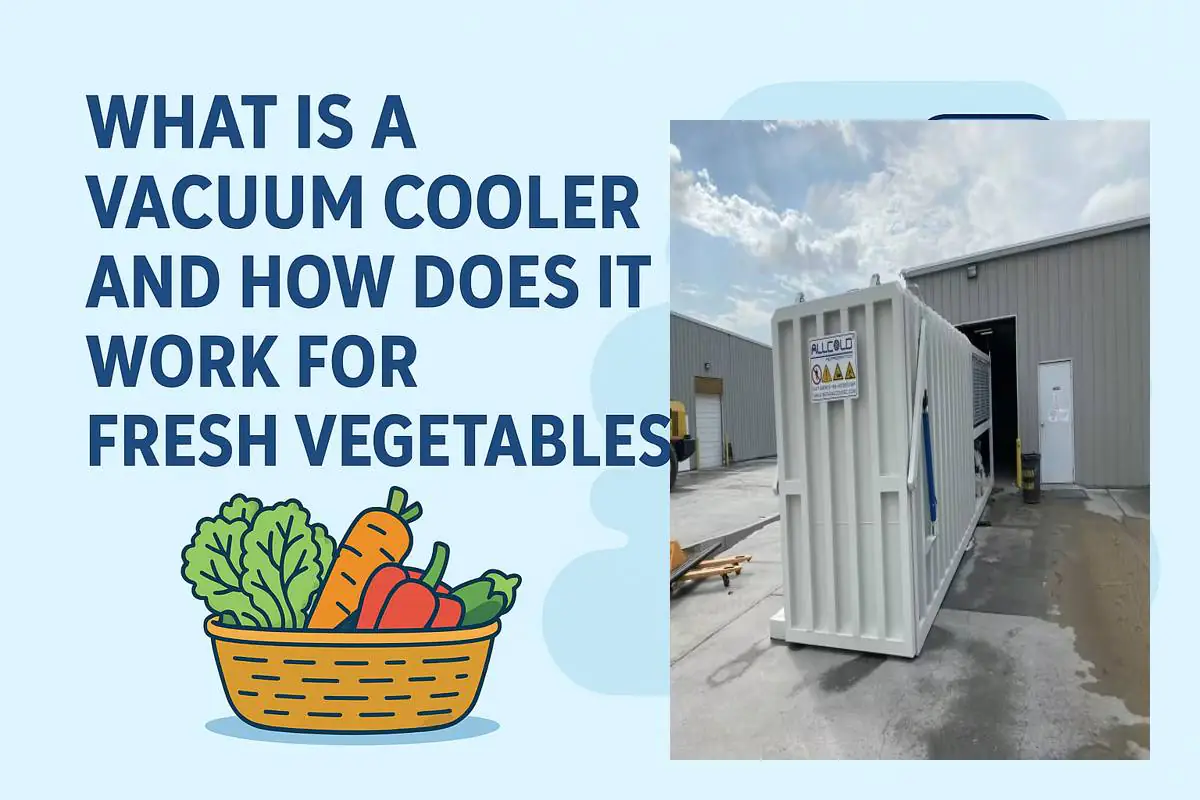
What is a Vacuum Cooler and How Does It Work for Fresh Vegetables?
Field heat is destroying your freshly harvested vegetables, costing you money with every passing hour. This rapid decay reduces shelf life and eats directly into your profits.
A vacuum cooler is a machine that rapidly chills fresh vegetables by lowering the air pressure in a sealed chamber. This causes water to boil off the produce surface at a low temperature, cooling it down in just 15-25 minutes and preserving its freshness.
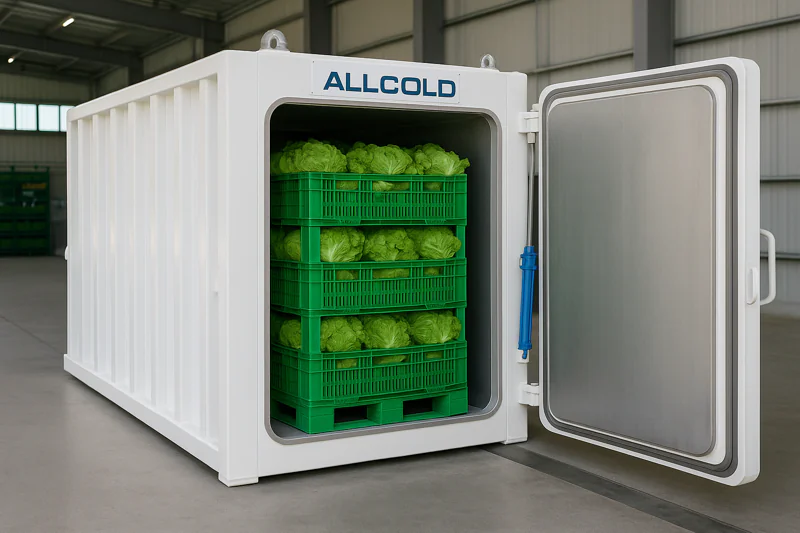
I’ve seen many farmers and food producers face this challenge. They work hard to grow a perfect product, only to lose quality in the critical hours after harvest. The science behind vacuum cooling is simple but powerful. By changing the pressure, we can make water boil without high heat, and this is the secret to cooling produce incredibly fast. Let’s look at how it all comes together.
How does a vacuum cooler actually make vegetables cold?
Your conventional cold room takes many hours to chill produce. This slow process allows vegetables to continue to degrade, losing crispness and value before they even reach the customer.
A vacuum cooler uses a powerful pump to remove air from a sealed chamber. This low pressure makes water’s boiling point drop. The moisture on the vegetables evaporates, taking heat energy with it and rapidly cooling the produce from the core.
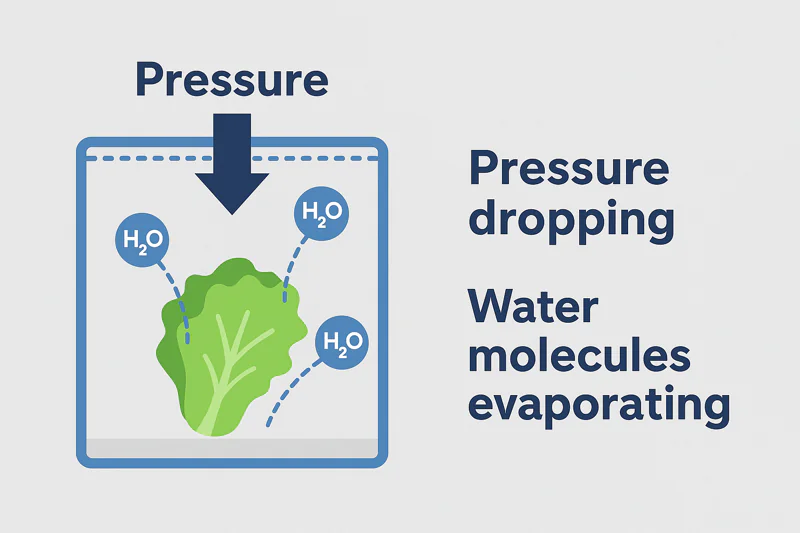
The Science of Low-Pressure Boiling
The process is a fantastic example of physics at work. At sea level, water boils at 100°C. But if you go to a high mountain, the air pressure is lower, and water boils at a lower temperature. A vacuum cooler1 takes this to an extreme. It creates a very low-pressure environment inside a steel chamber.
The machine’s automatic cycle follows a clear sequence. First, the vacuum pump starts, and the inside pressure begins to drop quickly. During this phase, not much cooling happens. Then, once the pressure is low enough, the water on the vegetables starts to boil. This is the main cooling phase, where both the pressure and the product’s temperature drop together. In about 15 to 25 minutes, the product can go from a hot field temperature down to a cool 3°C. Once the target temperature is reached, the compressor stops, and the machine lets air back into the chamber so you can open the door.
| Cycle Stage | Inside Pressure | Product Temperature | Duration |
|---|---|---|---|
| Initial Pulldown | Decreasing ↘ | Stable → | 0-15 minutes |
| Evaporative Cooling2 | Decreasing ↘ | Decreasing ↘ | 15-25 minutes |
| Cycle Complete | Stabilizing → | Stable ↘ | After 25 minutes |
What are the key components inside a vacuum cooler?
You see a large steel box, but you are not sure what makes it work. Buying a complex machine without understanding its core parts is a big risk for any business.
The main components are a powerful vacuum pump to create the low pressure, a refrigeration system with a compressor to remove heat, and a smart PLC with a touch screen for control. We select top brands like Bitzer and Siemens for these critical parts.
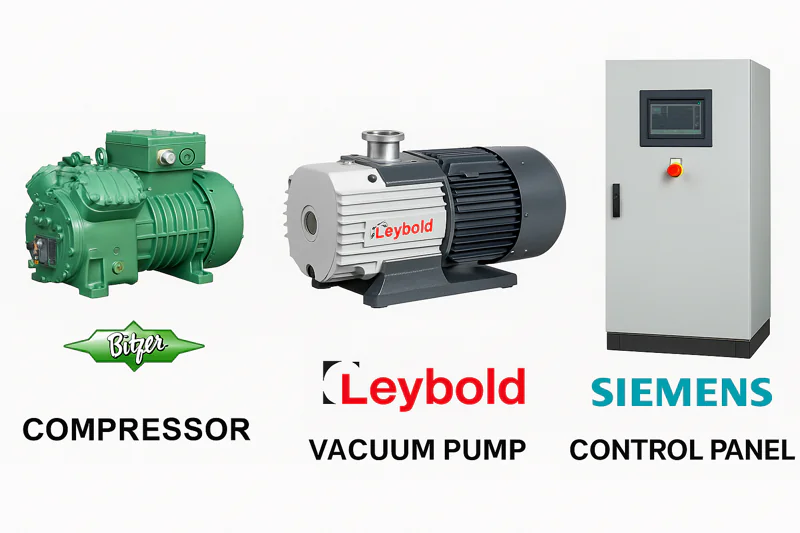
The Heart of the Machine
A vacuum cooler has two main systems working together: the vacuum unit and the cooling unit. It is the quality of the parts in these systems that determines how well the machine performs. We believe in using the best to build the best.
The Vacuum Pump is the engine of the process. Its job is to remove air from the chamber quickly and efficiently. We use world-class brands like Leybold from Germany or Nash from the USA. The Refrigeration System3 is what captures the heat. As water evaporates from the vegetables, it turns into vapor. This vapor is captured and turned back into liquid on a very cold coil, which is cooled by a compressor. For this vital job, we use reliable Bitzer compressors from Germany. The Control System is the brain. A Siemens PLC and touch screen allow you to run complex cooling cycles with a simple press of a button.
| Component | Function | Brand Example | Country of Origin |
|---|---|---|---|
| Compressor | Cools the condenser to capture water vapor | Bitzer | Germany |
| Vacuum Pump4 | Removes air to lower chamber pressure | Leybold / Nash | Germany / USA |
| Touch Screen / PLC | Controls the automatic cooling cycle | Siemens | Germany |
| AC Contactor | Manages electrical power to the motors | Schneider | Germany / France |
How long does it take to cool fresh vegetables?
Your vegetables are losing quality every minute they sit waiting to be cooled. Traditional cold rooms are just too slow to handle the volume during your peak harvest season.
The cooling cycle for fresh produce is finished in around 15 to 25 minutes. The exact time can change based on the specific vegetable, how much you load, and its starting temperature. This incredible speed is what preserves peak freshness.
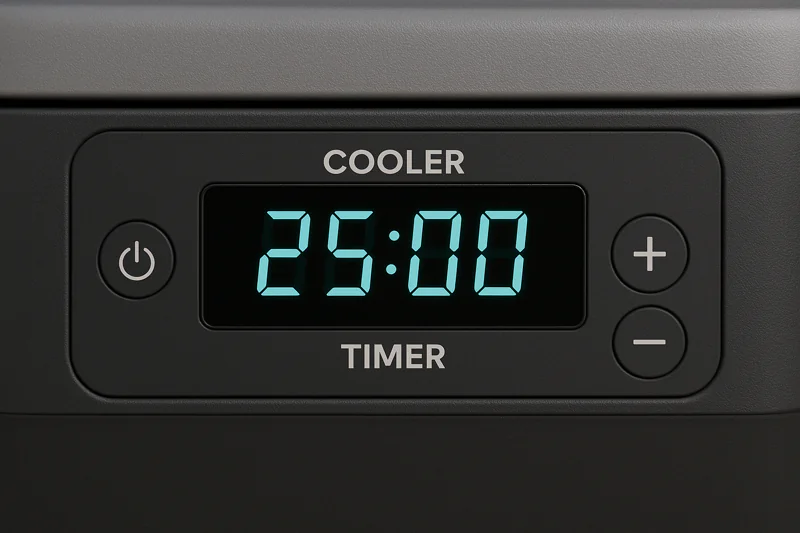
Speed and Efficiency
The speed of vacuum cooling5 is its biggest advantage. While one batch of lettuce is being cooled in 25 minutes, another batch can be harvested and prepared for the next cycle. Different products have different cooling times. For example, we’ve designed systems that cool baked bread from 92°C to 30°C in just 5 minutes. For steamed rice, the goal might be to go from 98°C down to 3°C, which takes about 15-25 minutes.
The entire process is automated. The operator simply loads the pallets, closes the door, and presses start on the touch screen. The machine’s PLC runs the full cycle. When the sensors detect that the product has reached the target temperature you set, the compressor will stop automatically. The system then enters a "deflation" stage to let air back into the chamber so the door can be safely opened for unloading. This efficiency allows you to process a huge amount of product in a single day.
| Product Example | Starting Temperature | Finishing Temperature | Cooling Cycle Time |
|---|---|---|---|
| Baked Bread | 92°C | 30°C | Within 5 minutes |
| Steamed Rice | 98°C | 3°C | Around 15-25 minutes |
| Fresh Vegetables | Field Temperature | Approx. 3°C | Around 15-25 minutes |
What makes a high-quality vacuum cooler?
All vacuum coolers might look like simple steel boxes from the outside. You need to know how to identify a reliable, well-built machine that will last for years.
A high-quality cooler is defined by the quality of its components and its intelligent design. It uses trusted, top-brand parts from countries like Germany, Italy, and Switzerland for maximum reliability. Advanced features like a touch screen and a troubleshooting assist system also set premium machines apart.
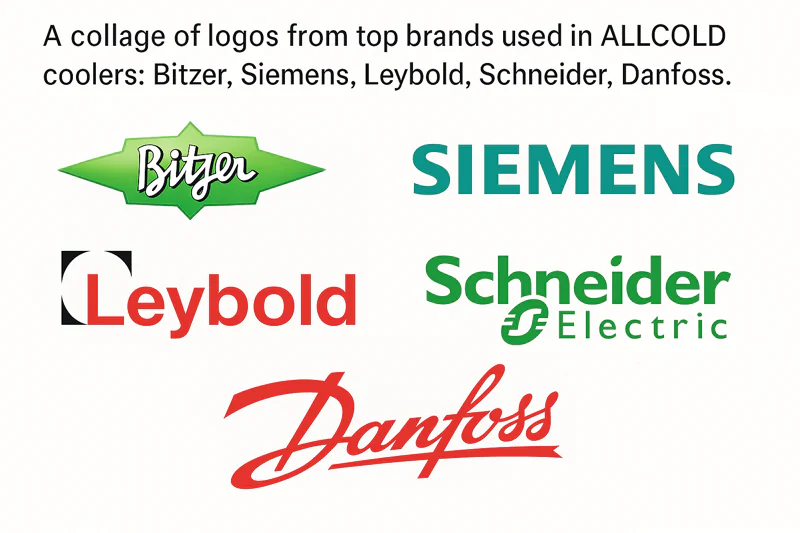
The Allcold Difference: Investing in Reliability
When you invest in a machine, you are investing in your business’s future. The quality of every part matters. That is why we build our coolers with components from the best manufacturers in the world. This focus on quality means our machines are more reliable, more efficient, and easier to service.
We use parts from established European and American brands known for their engineering excellence6. This includes pumps and compressors from Germany, electrical contactors from France, safety relays from Switzerland, and valves from Denmark. This commitment to quality is also reflected in the user experience7. Our machines feature easy-to-use touch screen controls and smart systems like a troubleshooting assistant to help operators solve problems quickly. These details make a big difference in the daily operation of a busy facility.
| Component | Brand Example | Country of Origin |
|---|---|---|
| Phase Protection | Carlo Gavazzi | Switzerland |
| Oil Separator | Frascold | Italy |
| Expansion Valve | Danfoss | Denmark |
| Safety Relay | Schneider | Germany / France |
Conclusion
A vacuum cooler is a powerful tool. It uses the physics of low-pressure evaporation to chill fresh vegetables faster than any other method, protecting their quality and extending their shelf life.
-
Explore this link to understand the mechanics and benefits of vacuum coolers in food preservation. ↩
-
Learn about evaporative cooling techniques and their efficiency in various industries. ↩
-
Exploring the workings of a Refrigeration System can provide insights into effective cooling technologies. ↩
-
Understanding the Vacuum Pump’s function can enhance your knowledge of efficient cooling systems. ↩
-
Explore the advantages of vacuum cooling to enhance your food processing efficiency and quality. ↩
-
Explore this link to understand how engineering excellence impacts product reliability and efficiency. ↩
-
Discover insights on user experience and its crucial role in enhancing operational efficiency and satisfaction. ↩
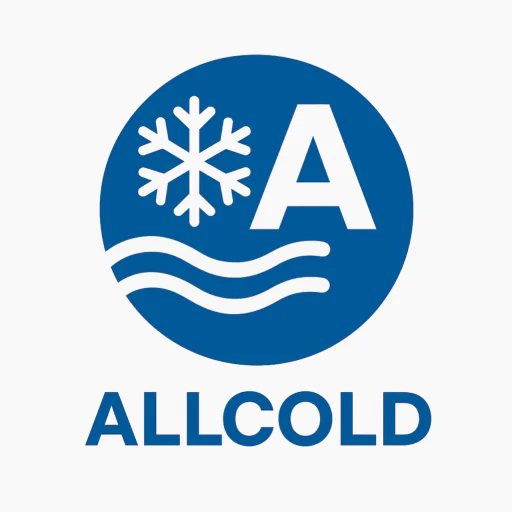
Mila
You May Also Like
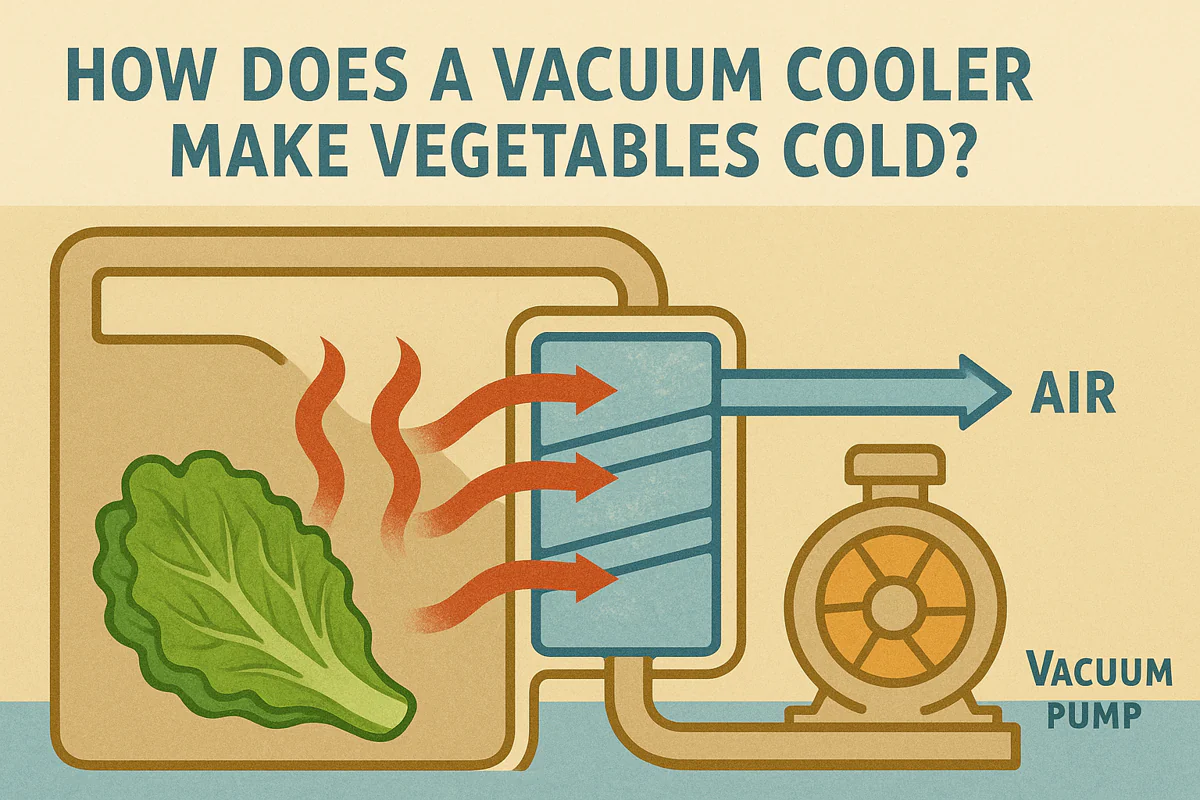
How Does a Vacuum Cooler Make Vegetables Cold?
It seems almost magical: you place warm vegetables in a steel chamber, and just 20-30 minutes later, they emerge perfectly
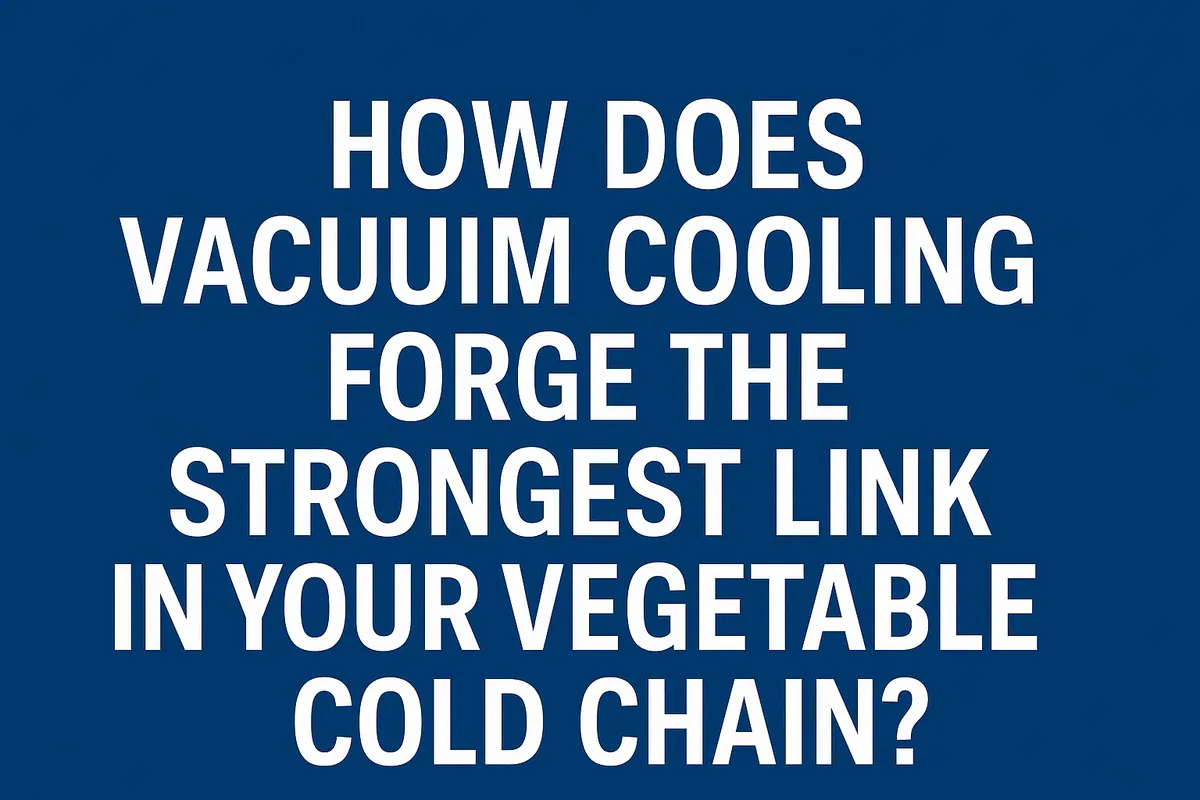
How Does Vacuum Cooling Forge the Strongest Link in Your Vegetable Cold Chain?
You work tirelessly to grow perfect, healthy vegetables. Yet, you know that from the moment of harvest, an invisible clock
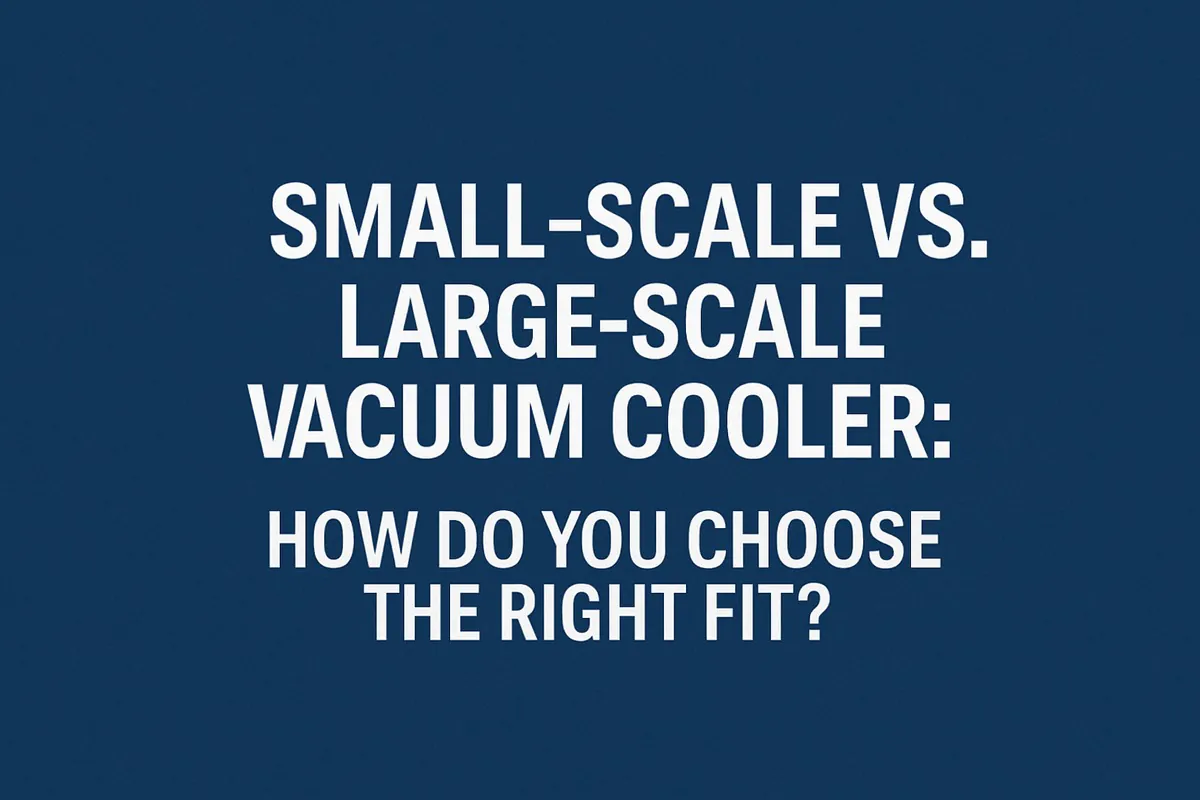
Small-Scale vs. Large-Scale Vacuum Cooler: How Do You Choose the Right Fit?
You’re convinced that vacuum cooling is the key to elevating your product quality, but now you face a critical decision.
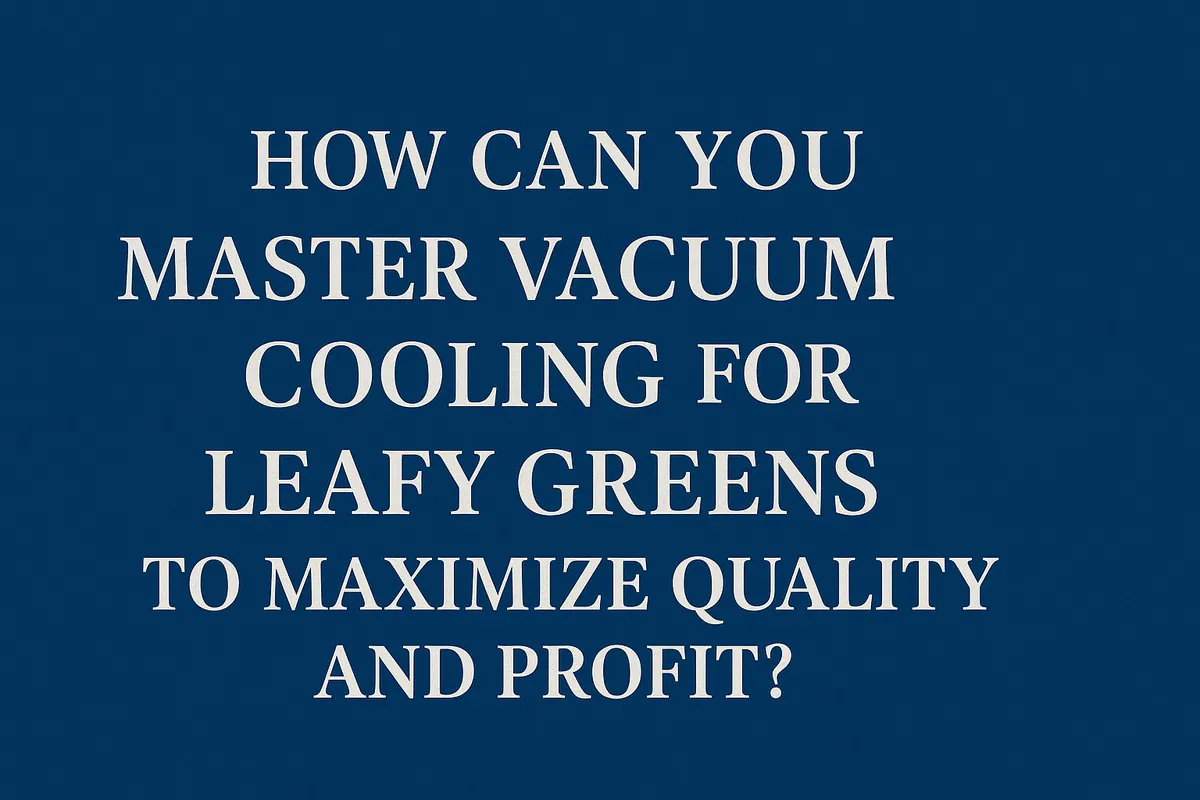
How Can You Master Vacuum Cooling for Leafy Greens to Maximize Quality and Profit?
You grow beautiful, vibrant leafy greens, but you know the invisible enemy is time. From the moment of harvest, the
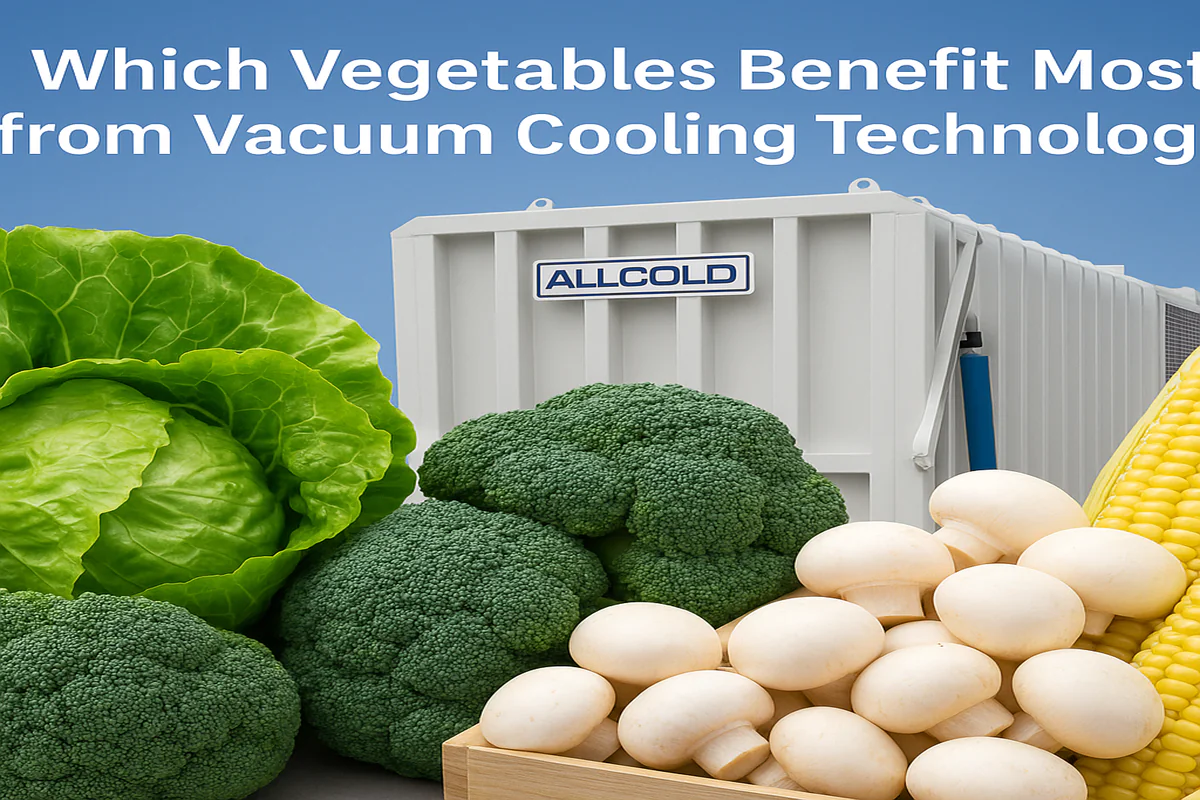
Which Vegetables Benefit Most from Vacuum Cooling Technology?
You see the promise of rapid cooling, extended shelf life, and superior quality, but you’re unsure if this technology is
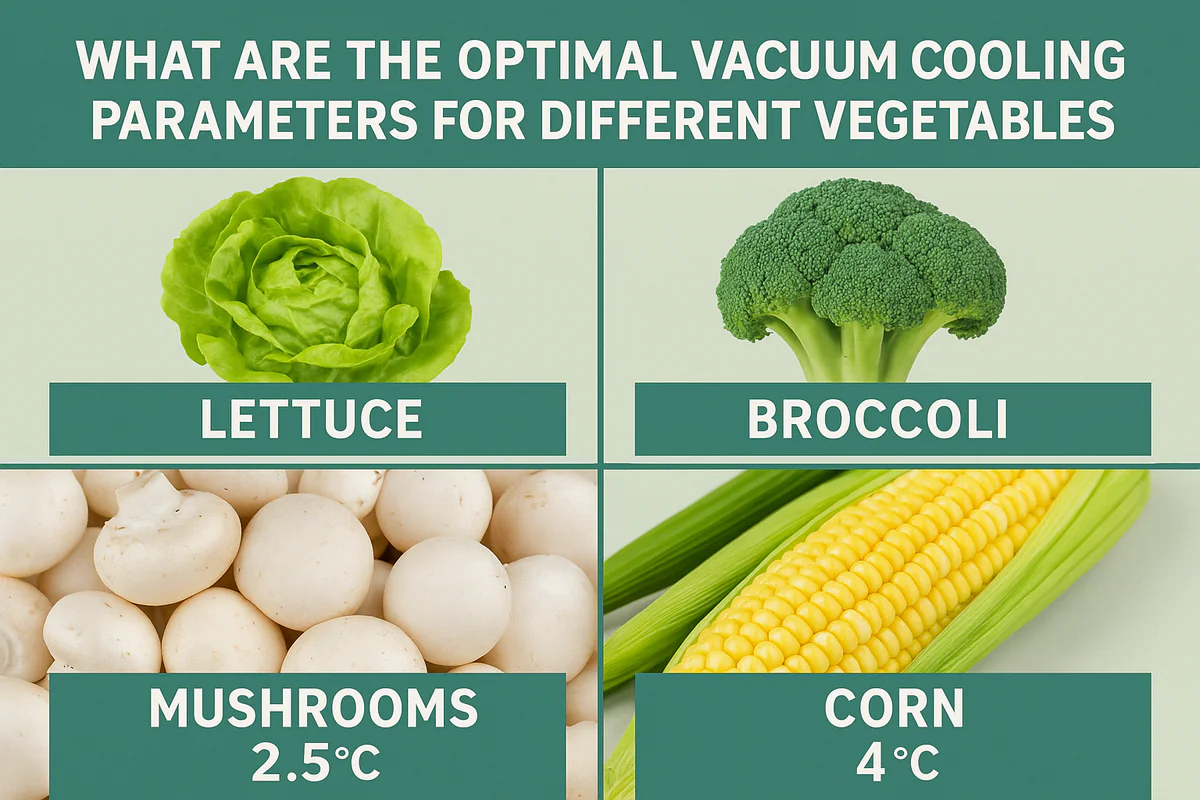
What Are the Optimal Vacuum Cooling Parameters for Different Vegetables?
You’ve harvested beautiful produce, from crisp lettuce to delicate mushrooms. But using a "one-size-fits-all" setting on your vacuum cooler feels
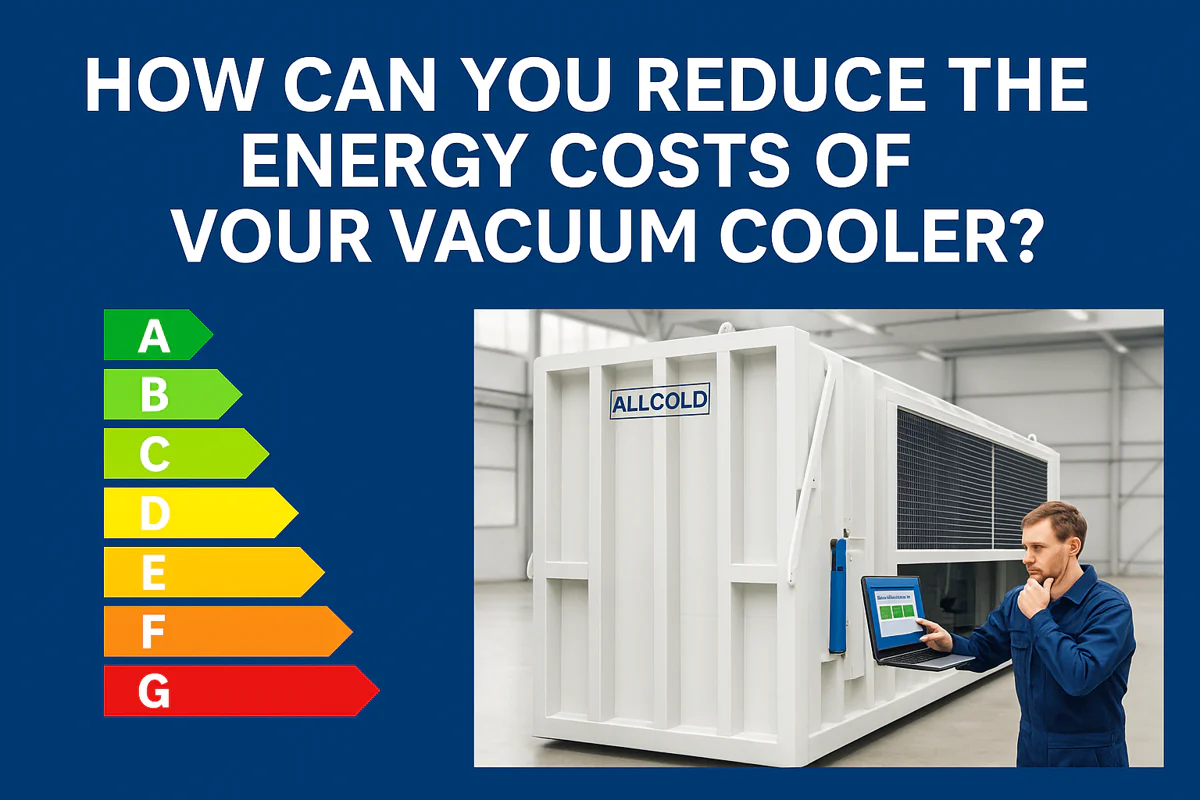
How Can You Reduce the Energy Costs of Your Vacuum Cooler?
Your vacuum cooler is a powerhouse of productivity, but your monthly electricity bill is climbing. You’re starting to wonder if
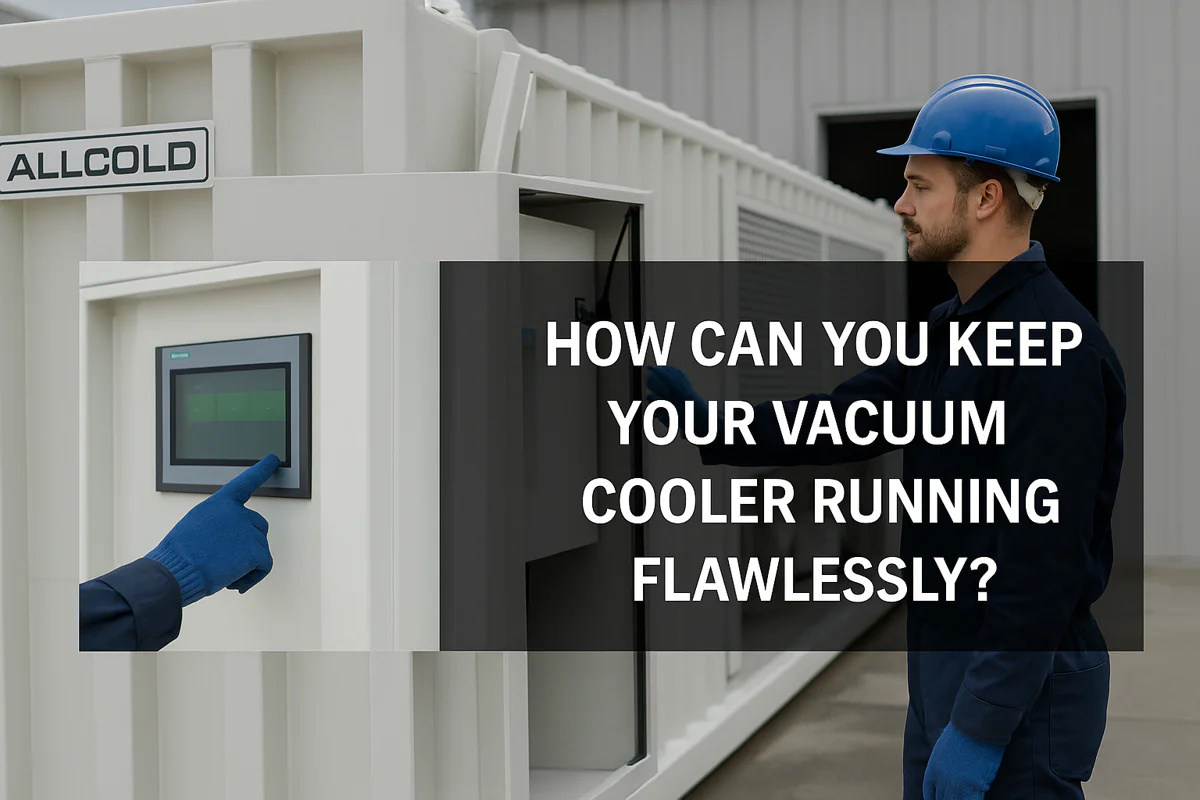
How Can You Keep Your Vacuum Cooler Running Flawlessly?
Your vacuum cooler is a vital asset, but you’re worried about unexpected breakdowns during peak season. Neglecting maintenance feels like
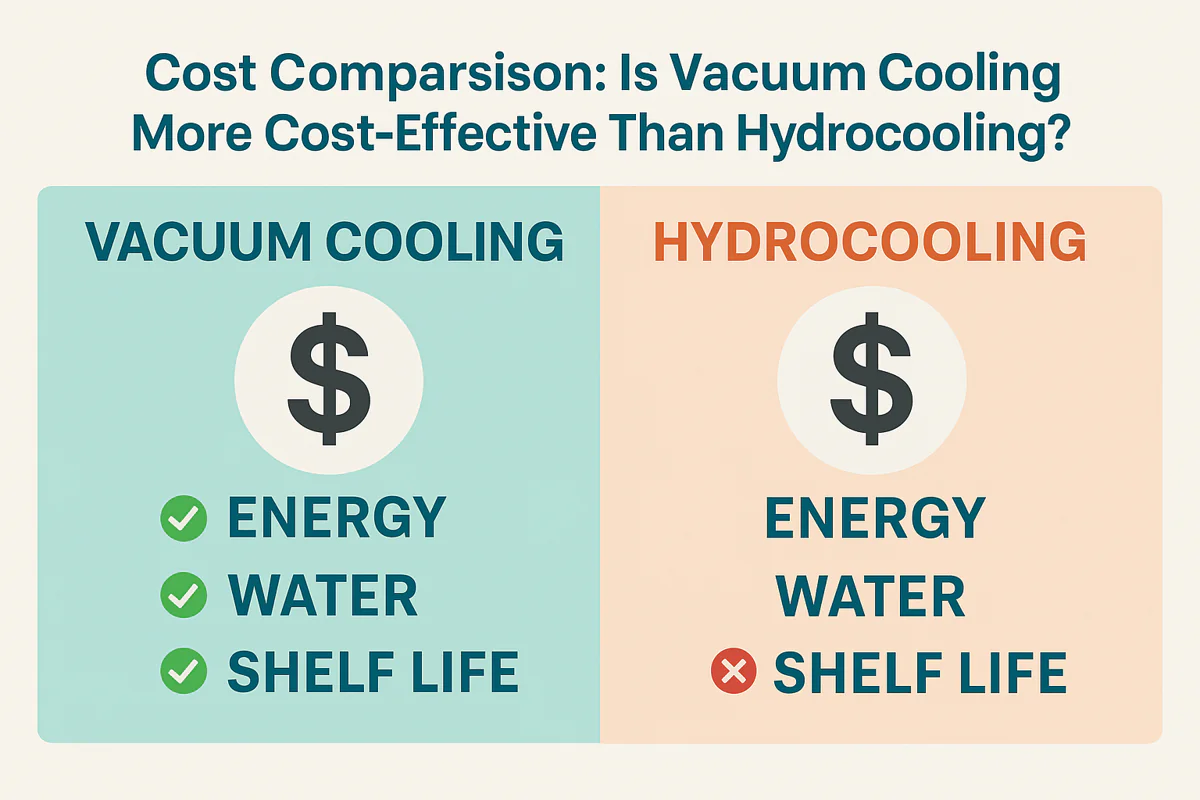
Cost Comparison: Is Vacuum Cooling More Cost-Effective Than Hydrocooling?
Choosing between cooling technologies feels like a high-stakes gamble. You need to lower your operational costs, but the wrong decision
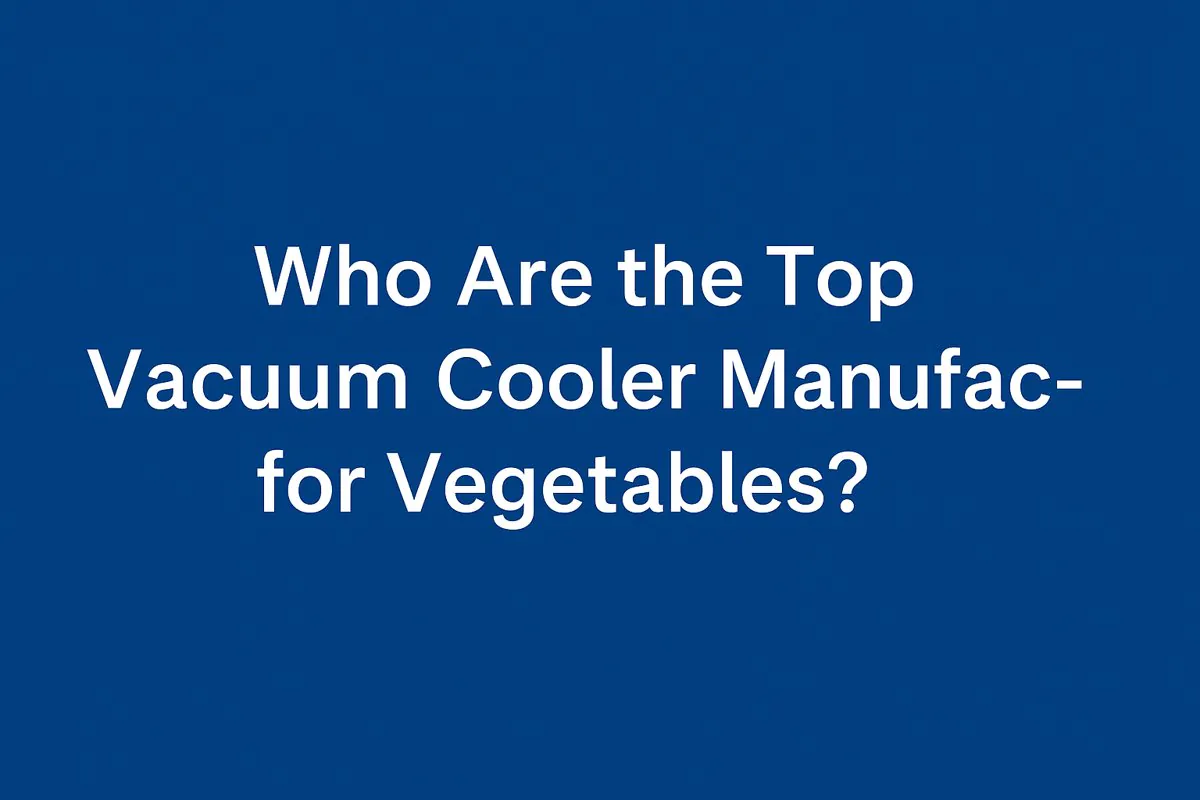
Who Are the Top Vacuum Cooler Manufacturers for Vegetables?
Searching for a list of top vacuum cooler brands can be overwhelming. You’re not just buying a machine; you’re investing
